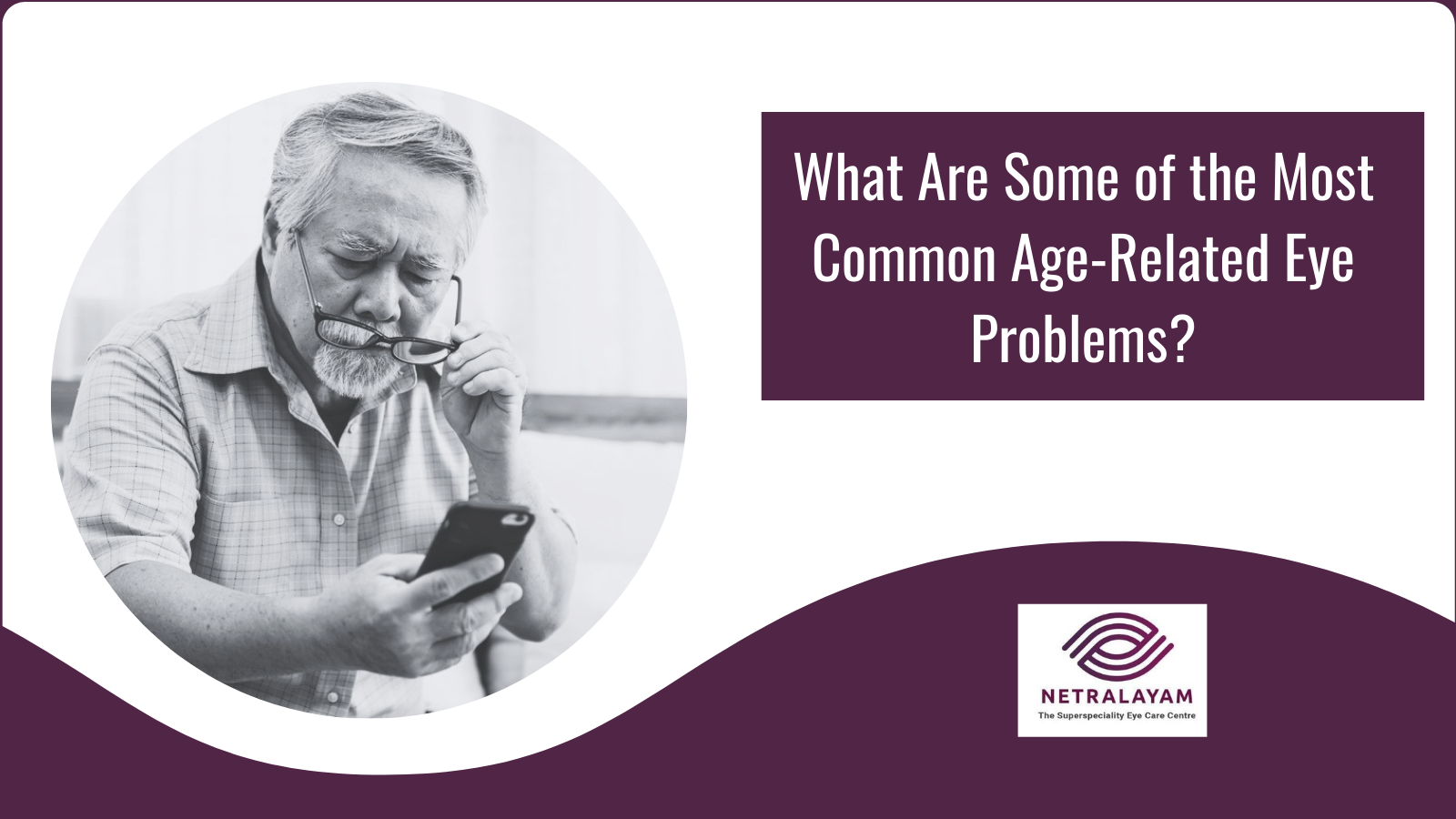Committed to Eye Care with Compassion, Technology and Competency
Committed to Eye Care with Compassion, Technology and Competency

6/15/2022
It is common to detect changes in your vision as you become older. Maintaining frequent eye doctor appointments is especially important if you have some vision disorder Because if an eye disease is left untreated, it can lead to vision loss in the future.
Although aging might cause changes in your vision and eyes, you can take steps to ensure your eye and overall health for the rest of your life. It could be as easy as using brighter lights around the house to prevent accidents caused by poor vision or visiting your nearest eye hospital more frequently to screen for age-related disorders.
Presbyopia is the loss of the capacity to perceive small text or near things up close. This is a natural condition that occurs gradually throughout a lifetime. You might not notice any changes until you're 35 or 40 years old.
Floaters are small dots or particles that float across your vision. In well-lit rooms or on a bright day, most people notice them. Floaters are usually harmless, but if they are accompanied by light flashes, they could suggest an eye condition such as retinal detachment. If the type or amount of spots or flashes changes suddenly, consult your eye doctor as soon as possible.
This happens when the tear glands cannot generate enough tears or create tears of poor quality. Itching, burning, and even vision loss can occur as a result of dry eyes. In severe cases of dry eyes, surgery may be required.
Being sensitive to light, wind, or temperature changes might cause tears or an excess of tears. It can also indicate a more serious issue, such as an eye infection or a clogged tear duct. Furthermore, because dry eyes are readily irritated, persons with dry eyes may cry excessively.
Cataracts are hazy regions that form in the front of the eye's lens. The lens of the eye is normally transparent, similar to that of a camera lens. Cataracts prevent light from flowing readily through the lens to the retina at the back of the eye, resulting in hazy vision. Cataracts normally develop slowly, with no pain, redness, or tears. Some remain small and have little effect on vision. They can nearly always be removed surgically if they become large or thick and have a substantial influence on vision.
Glaucoma is usually caused by an increase in intraocular pressure. This, if left untreated, can result in permanent vision loss and blindness, with few symptoms. Heredity, age, race, diabetes, and several medications are all risk factors for glaucoma. Other causes of glaucoma include a blunt object or chemical injury to the eye, acute eye infection, blood vessel obstruction, inflammatory illnesses of the eye, and, in rare cases, corrective eye surgery. The majority of people with glaucoma have no early signs or symptoms of elevated pressure.
This thin lining at the rear of the eye is affected by retinal diseases. Macular degeneration, diabetic retinopathy, retinal vascular occlusions, and detached retina are among them.
There are certain things you can do to look after your eyes and keep them healthy as you become older:
There are various steps you can take to prevent vision loss and maintain good eye health, whether or not you have an age-related visual disorder. If you have diabetes or a family history of eye illness, see your eye doctor for a full eye check on a regular basis.
Are you suffering from eye problems and looking for the “best eye hospital near me”? If so, contact us at Netralayam. We are one of the best eye hospitals in Kolkata. We offer compassionate care and treatment for various age-related vision problems.
Comments are closed
